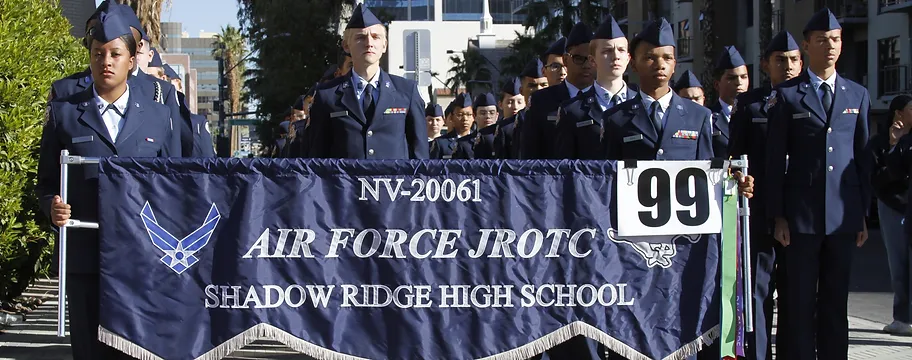The Air Force Junior ROTC (AFJROTC) unit at Shadow Ridge is gearing up for a pivotal inspection from headquarters, a comprehensive review that will evaluate its programs, leadership, and overall performance. With weeks of preparation under their belts, cadets and instructors are fine-tuning every detail to ensure that the unit meets and exceeds the high standards set by the organization, showcasing their dedication to excellence and discipline.
Once every year, headquarters comes into classrooms to observe: quantifiable data such as cadet retention rate, community service averages, and the amount of events completed over the fixed span of months.
Students have to focus on specifics. Students, better known as cadets, specifically focus on manageable cadet-oriented goals, which include community service hour requirement, upkeeping inspection scores, and cadet proficiency, which can be shown in many ways but primarily from drill command proficiency.

Senior cadets play a much more hands-on role with all their fellow cadets, as their success comes from how well they perform. Senior cadets also set goals for cadets to achieve, and manage cadets on event sites, to most effectively perform. Instructors mainly play a guiding role to the cadre and upper leadership, as the unit is a cadet-ran program, and a place where individuals are taught to become the best leaders they can be and to excel in roles where others have high expectations of them.
The preparation that comes with inspection helps students learn and use leadership skills. Inspection shows that cadets have leadership and effective followership skills, as well as a good amount of ability and independence. When they are taught a certain command or movement they get better each time, with them eventually becoming good enough to teach it, which is the effect of the inspection cycle on cadets.
Junior Leah Konicek states, “I have to make sure my boots are polished and my uniform is sharp.”
Cadets face many challenges throughout the year, especially during this time. Individual cadets face tasks such as, learning drill movements and regulations, how to effectively listen and communicate with others, and how to manage themselves and achieve their goals. They eventually overcome these challenges with repetition and assistance, as with repetition of drill movements and memorization, cadets sharpen their movements, and with leadership assistance, they gain new skills to help them sharpen their old ones.
Cadets specifically in leadership roles face different challenges, as they must learn how to set achievable goals, manage not just themselves, but groups of people, and learn how to do logistical work, and other work not usually seen in a classroom environment.
These challenges are overcome by learning how to effectively work as a team with their fellow leadership, and “understanding that you can’t do EVERYTHING by yourself,” Military science teacher Donna Johnson states.
A typical day of preparation is full of many tasks cadets and leadership must work on. Inspection preparation looks different for different people in the unit. For regular cadets, by excelling in the classroom, retaining things such as drill movements, and going to and participating in community service events, they are preparing themselves. For senior-ranking leadership cadets, their preparation comes with executing said events and preparing cadets for evaluation, as well as documenting their achievements and problems throughout the year. For upper leadership, their job is to compile this information, and present it to the Regional Director on inspection day.









